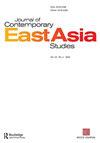Nihon no Gensiryoku Gaiko [Japan’s nuclear diplomacy: a resource-poor country’s 70 years of struggle]
IF 1.4
Q1 AREA STUDIES
引用次数: 0
Abstract
The objective of Prof. Takeda’s new book is to describe the history of the Japanese peaceful use of nuclear energy. Although many other books with the same objective have been published since the meltdown of Fukushima Nuclear Power Plant, his book is distinctive because of two perspectives; the focus on Japanese diplomacy and comprehensiveness covering not only the history of peaceful use but the related history such as disarmament and non-proliferation of nuclear weapons. In Japan, the most important book in this field has been Yoshioka’s work. As the main focus of Yoshioka was understanding the Japanese domestic structure for developing of nuclear energy, Takeda’s book is another pillar of this field. In the introduction, Takeda gives a brief history of the discovery of nuclear energy and explains technical terms such as nuclear reactors and nuclear materials. With these explanations, even readers who are not familiar with the topic of peaceful use can read this book without difficulty. Chapter 1 outlines the Japanese history related to nuclear energy up to 1954, including the massive impact of the Lucky Dragon incident. This incident made Japan a three-time victim of nuclear weapons, and Japanese citizens began to feel anxious about nuclear energy itself. Japanese congressmen such as Yasuhiro Nakasone, future Japanese prime minister, planned to overwhelm those negative attitudes through cooperation with the U.S. This idea resulted in a bilateral agreement to the preliminary research of nuclear energy in 1955, and this agreement was expanded to operate a nuclear power reactor in 1958. As Takeda points out, this agreement established Japanese principles for developing nuclear energy; importing advanced technology and rushing for being a major state of peaceful use. In chapter 2, Takeda describes that the French nuclear experiments in 1960 and the Chinese experiments in 1964 made the U.S. increasingly concern about the proliferation of nuclear weapons. Thus, Japan was forced to consider whether Japan should participate in the Treaty on the Non-Proliferation of Nuclear Weapons (NPT). Takeda suggests that Japan finally decided to be an original signatory for several reasons in 1970. First, Japan succeeded in inserting a provision about holding review conferences every 5 years. Second, Japan also succeeded to revise the bilateral agreement of 1958 to enable Japan to import more nuclear fuel. Third, the U.S. assured Japan about a so-called “nuclear umbrella.” The first half of chapter 3 covers the Japanese process of NPT ratification. According to Takeda, after clarifying a safeguarding procedure required by the NPT would not be an obstacle for the peaceful use, the Japanese government decided to ratify the NPT in 1976. In addition, Takeda mentions that even by the incident of the Japanese nuclear-powered ship “Mutsu,” which led some Japanese people to establish public movements against nuclear power plants, Japan never changed its goal of becoming a major state of peaceful use. In pursuit of this goal, Japan sought cooperation with other countries. It is very interesting to the reviewer that while Japan made the U.S. angry by trying to find another supplier of enriched uranium, Japan succeeded in cooperating with European states in plans for the reprocessing of used fuel. The second half of this chapter notes that India’s experiment in 1974 intensified the U.S. concern about the proliferation, and the U.S. began to establish an export control regime. Takeda mentions that Japan was allowed to join this regime as a supplier group日本核外交:一个资源匮乏的国家70年的斗争
武田教授新书的目的是描述日本和平利用核能的历史。尽管自福岛核电站熔毁以来,已经出版了许多其他具有相同目标的书,但他的书之所以与众不同,是因为有两个视角;对日本外交的关注和全面性,不仅涵盖和平利用的历史,而且涵盖裁军和不扩散核武器等相关历史。在日本,这一领域最重要的书籍是吉冈的作品。由于吉冈的主要关注点是了解日本国内发展核能的结构,武田的书是这一领域的另一个支柱。在引言中,武田简要介绍了核能的发现历史,并解释了核反应堆和核材料等技术术语。有了这些解释,即使是不熟悉和平利用主题的读者也可以毫无困难地阅读这本书。第一章概述了日本直到1954年与核能有关的历史,包括幸运龙事件的巨大影响。这一事件使日本三次成为核武器的受害者,日本公民开始对核能本身感到焦虑。日本国会议员,如未来的日本首相中曾根康弘,计划通过与美国的合作来克服这些消极态度。1955年,这一想法促成了一项关于核能初步研究的双边协议,1958年,该协议扩大到运行核反应堆。正如武田指出的那样,该协议确立了日本发展核能的原则;进口先进技术,争取成为主要的和平利用国。在第二章中,武田描述了法国1960年的核实验和中国1964年的核试验使美国越来越担心核武器的扩散。因此,日本不得不考虑日本是否应该参加《不扩散核武器条约》(《不扩散条约》)。武田认为,日本在1970年出于几个原因最终决定成为最初的签署国。首先,日本成功地插入了关于每5年举行一次审查会议的规定。其次,日本还成功地修改了1958年的双边协议,使日本能够进口更多的核燃料。第三,美国向日本保证建立所谓的“核保护伞”。第三章的前半部分介绍了日本批准《不扩散条约》的过程。武田表示,在明确《不扩散条约》要求的保障程序不会成为和平利用的障碍后,日本政府于1976年决定批准《不扩散核武器条约》。此外,武田还提到,即使日本核动力船“木须”号事件导致一些日本人发起反对核电站的公众运动,日本也从未改变其成为主要和平利用国的目标。为了实现这一目标,日本寻求与其他国家合作。评论家非常感兴趣的是,尽管日本试图寻找另一家浓缩铀供应商,这让美国感到愤怒,但日本成功地与欧洲国家合作制定了乏燃料再处理计划。本章后半部分指出,印度1974年的试验加剧了美国对核扩散的担忧,美国开始建立出口管制制度。武田提到,日本被允许作为供应商集团加入这一制度
本文章由计算机程序翻译,如有差异,请以英文原文为准。
求助全文
约1分钟内获得全文
求助全文
来源期刊

Journal of Contemporary East Asia Studies
Social Sciences-Cultural Studies
CiteScore
2.50
自引率
0.00%
发文量
10
审稿时长
6 weeks
 求助内容:
求助内容: 应助结果提醒方式:
应助结果提醒方式:


